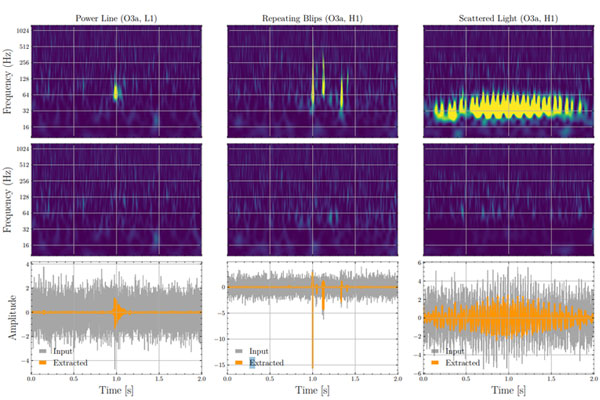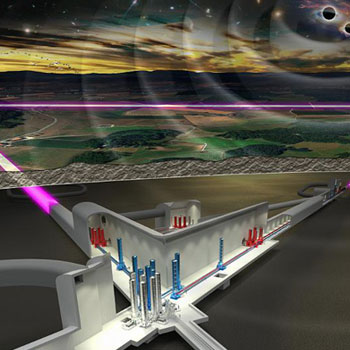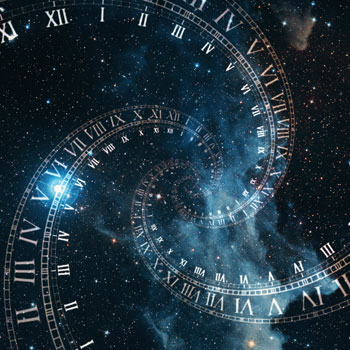Deep Learning extracts gravitational waves and removes glitches faster in LIGO data
Tom Dooney, a PhD candidate at Open Universiteit and in Utrecht University's GRASP group has developed DeepExtractor, a new deep learning tool that helps scientists analyse gravitational waves faster [3]. By learning to recognise the background noise inside ultra-sensitive detectors, DeepExtractor can isolate specific signals, such as those caused by black hole collisions or earthly disturbances like earthquakes. Inspired by audio signal processing techniques used in music, the tool allows researchers to 'listen' to the universe more clearly by removing terrestrial noise and extracting gravitational waves from the data.
When a black hole crashes into another, the universe sends out a ripple. Not made of light, but made of gravity, stretching and compressing spacetime itself. These ripples, known as gravitational waves, were first predicted by Albert Einstein in 1916, but it took nearly a century before they were directly detected for the first time in 2015 by the LIGO observatory.
'It’s like listening to the universe,' says Tom Dooney [1], a researcher at Utrecht University’s GRASP [2] group. 'Gravitational waves behave a lot like audio signals. However, they’re very faint, and buried in a lot of background noise. It’s like trying to listen to one specific, distant voice in a shopping mall.”
Rush hour
Dooney recently developed DeepExtractor [3], a deep learning tool that can help scientists isolate and interpret these signals more efficiently than traditional methods can. While gravitational wave detectors are designed to be incredibly sensitive—capable of picking up minute disturbances from the far reaches of space—this sensitivity comes with a downside: they also detect everything else: 'Earthquakes, thunderstorms, even rush hour traffic in nearby towns,' Dooney says. 'It all shows up in the data.'
Glitches in the system
Some of these disturbances, known as glitches, can mimic the signals scientists are actually looking for: cosmic events like black hole or neutron star collisions. Traditionally, sorting signal from noise has been a slow and computationally expensive task.
That’s where DeepExtractor comes in.
Borrowing techniques from music separation algorithms, like those used to isolate vocals from instruments in a song, Dooney trained his AI to recognise what a ‘normal’ background signal looks like inside gravitational wave detectors. Once that baseline is understood, anything unusual stands out.
'We’re not trying to directly model the glitches, because we don’t know exactly what they look like,' Dooney explains. “Instead, we model the normal environment very precisely. Like knowing what the drum track of a song should sound like, so you remove it to better hear the guitar. The nice thing is that this approach can isolate gravitational waves in the same way.'
While the current version is optimised for glitch removal, DeepExtractor has shown promising results reconstructing real gravitational wave signals, even without having been explicitly trained to extract them.
10,000 times faster
DeepExtractor can clean two seconds of gravitational wave data in just 0.1 seconds. This means that it has the potential for real-time analysis, where noise can be filtered as data is collected. 'Eventually, we hope this can be turned into an online tool that works in real time,' says Dooney. 'That could be essential for future observatories like the Einstein Telescope, which will be so sensitive that there’ll basically always be gravitational waves in the data. Our current, traditional tools just wouldn’t keep up.'
Trust and transparency
One key concern in the field is the use of AI in high-precision science. Can researchers trust it? Dooney is the first to admit that skepticism is healthy. 'Physicists are trained to trust equations. When you introduce a black box model, you need to earn that trust. That’s why we’ve made DeepExtractor fully open-source. We want researchers around the world to test it, question it, and improve it.'
He also points out that the model was trained on over 250,000 realistic instances, which helps it generalise well, even in a real setting. Still, the tool is not infallible. It can sometimes struggle to isolate faint gravitational waves and glitches, and results need to be validated and, at times, be compared to other state-of-the-art methods.
Publication



